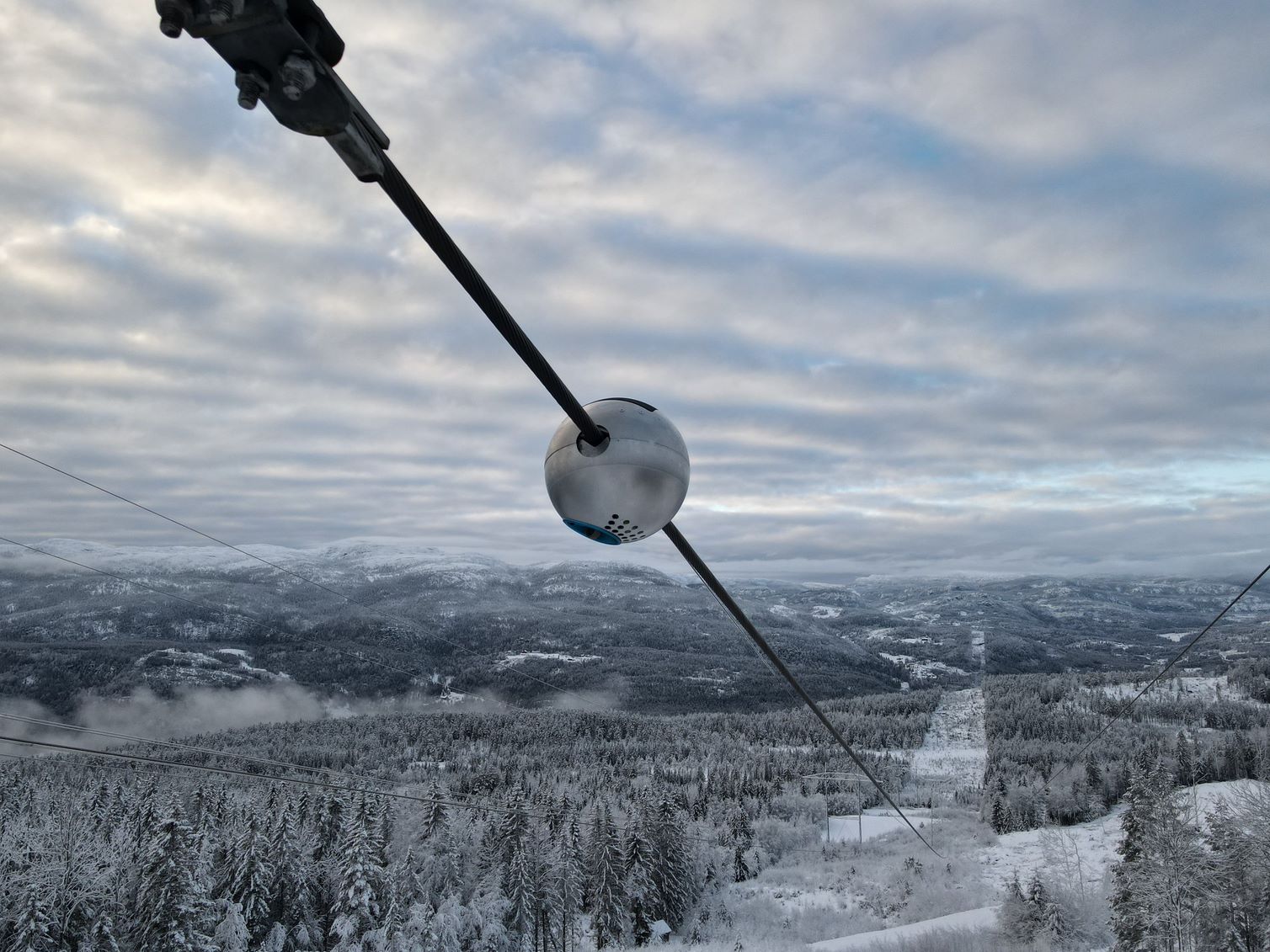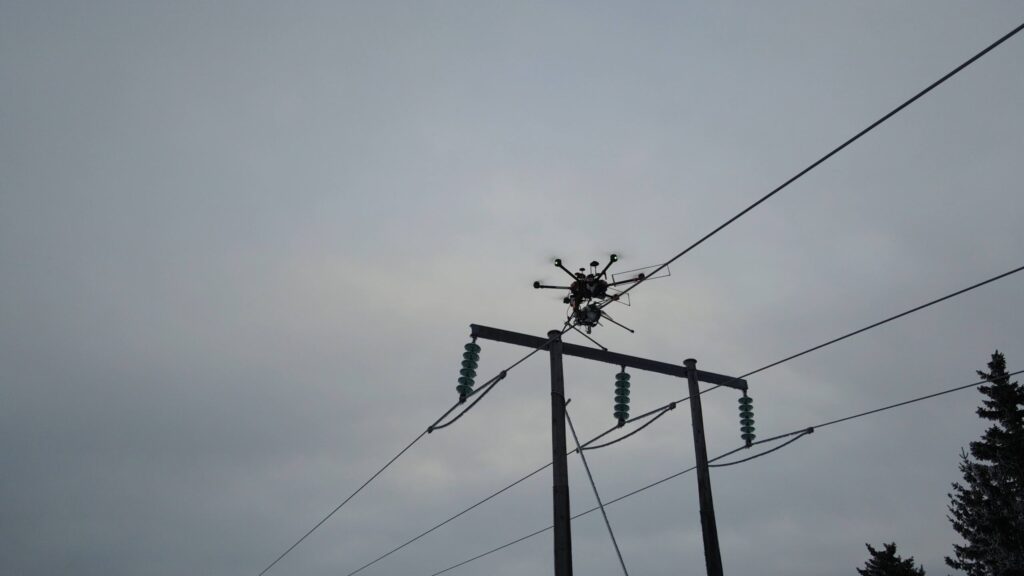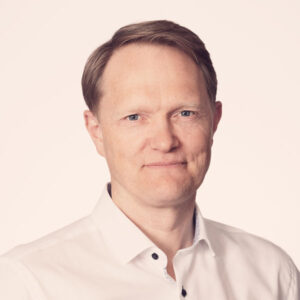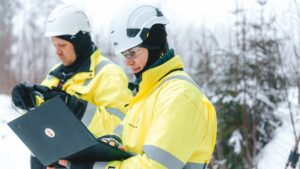"The small ball is increasing the transmission capacity in the power grid across 16 countries."
This is a summary of a recent news article found in TV2 (in norwegian), one of the major news outlets in Norway.
“We are going to take the world with our software and sensor technology,” says Jørgen Festervoll, director of the Norwegian technology company Heimdall Power.
The context is that new major electricity customers and producers are now often denied or forced to wait when they apply to connect to the power grid, because the capacity of the grid already is deemed as fully utilized.
Risk of Fire
It’s the temperature in power cables and other transmission equipment that sets the limits for how much power that can be transmitted through a line at any given time.
If it gets too hot, the cables can expand so much that they come dangerously close to the ground, or some of the equipment can even catch fire.

TAKING THE TEMPERATURE: The small ball, called Neuron, measures temperature, current, and the tilt angle of the power cable.
“We have to be careful not to overload the power lines and other components in our power grid so we won’t experience blackouts.” says Anne Sagstuen Nysæther, director of the utility company Elvia.
Since they don’t know exactly how much electricity is too much, utility companies usually send less electricity than they think is the maximum – just to be on the safe side.
A Speedometer for the grid
Now, this safety margin can be made smaller and more accurate. As the first in the world, the utility company Elvia is doing a system-wide implementation of the technology from Heimdall Power. The physical sensors are placed on the power lines with the help of autonomous drones, without needing to turn off the power.

DRONE INSTALLATION: Sensors are easily installed on energized power lines with Heimdall Powers unique Autonomous drone installation.
The CEO of Heimdall Power describes the sensor as a speedometer:
“This is the utility companies’ speedometer that allows you to drive right up to the speed limit, but not over,” says Festervoll.
The sensors measure the temperature of the power line, how much it may have sagged, along with the current in the line.
“With these sensors, the grid companies know exactly what they can send through the line, and thus use the entire capacity of the existing power grid, for example, when a lot of electricity is used on Christmas Eve.”
20 percent more power
Elvia hopes to increase the transmission capacity by 20 percent and help the situation until more power lines are built.
“We have set an ambition to get 20 percent more capacity out of the power grid we have,” says Sagstuen Nysæther of Elvia.
“This is because our customers, new businesses, and industries want to electrify their operations. And they want to establish new businesses that use electricity. In this context, we need to build more power grid. And while we’re in the process of building more grid, we want to utilize the capacity in the grid we already have as much as possible.”
Elvia is responsible for the operation and development of the power grid for two million people in Innlandet, Viken, and Oslo. Jørgen Festervoll envisions that many more can benefit from the patented technology in the near future.
“Together with Elvia, we are doing the world’s first and largest project, but our technology is already present around Europe and in the U.S. We currently have 36 customers in 16 countries, and we are on our way to take the world with our software and sensor technology,” says Festervoll.






